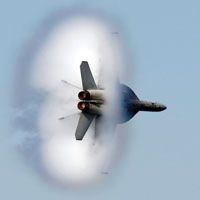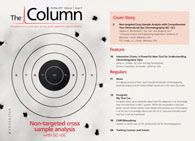KA-POW!
Researchers in Japan have found a way to separate nanometre-sized particles in a water-filled capillary using a laser-induced shockwave.

Researchers in Japan have found a way to separate nanometre-sized particles in a water-filled capillary using a laser-induced shockwave. The study, published in Analytical Chemistry,1 describes the microscopic chromatographic technique, termed laser-induced shockwave chromatography, that the authors say shows advantages compared with normal chromatography, particularly in terms of its speed and applicability to sticky and absorbing polymers.
To perform the separation, a single laser pulse is fired at a point within the water-filled capillary, turning the water within into super-hot plasma. The plasma expands quickly, sending a shockwave along the capillary and carrying nearby particles with it. The distance the shockwave carries the particles depends on their sizes; larger particles gain more momentum from the blast and so travel further.
The technique was tested on proteins, their aggregates and inorganic nanoparticles and found it was effective on particles between 9–300 kDa. Using it on nanoparticles, the researchers were able to separate particles differing in size by only a few nanometres.
The study concludes that the main advantage of this technique is its speed: The shockwave travels through the capillary in a fraction of a second, moving the particles less than a millimetre, which the study claims would make it suitable for lab-on-a-chip devices.
1. T. Nagahara, N. Ichinose and S. Nakamura, Anal. Chem., 83(7), 2416–2419 (2011).
This story originally appeared in The Column. Click here to view that issue.
Determining Enhanced Sensitivity to Odors due to Anxiety-Associated Chemosignals with GC
May 8th 2025Based on their hypothesis that smelling anxiety chemosignals can, like visual anxiety induction, lead to an increase in odor sensitivity, a joint study between the University of Erlangen-Nuremberg (Erlangen, Germany) and the Fraunhofer Institute for Process Engineering and Packaging (Freising, Germany) combined behavioral experiments, odor profile analysis by a trained panel, and instrumental analysis of odorants (gas chromatography-olfactometry) and volatiles (gas chromatography-mass spectrometry).
Investigating 3D-Printable Stationary Phases in Liquid Chromatography
May 7th 20253D printing technology has potential in chromatography, but a major challenge is developing materials with both high porosity and robust mechanical properties. Recently, scientists compared the separation performances of eight different 3D printable stationary phases.
Detecting Hyper-Fast Chromatographic Peaks Using Ion Mobility Spectrometry
May 6th 2025Ion mobility spectrometers can detect trace compounds quickly, though they can face various issues with detecting certain peaks. University of Hannover scientists created a new system for resolving hyper-fast gas chromatography (GC) peaks.

.png&w=3840&q=75)

.png&w=3840&q=75)



.png&w=3840&q=75)



.png&w=3840&q=75)









